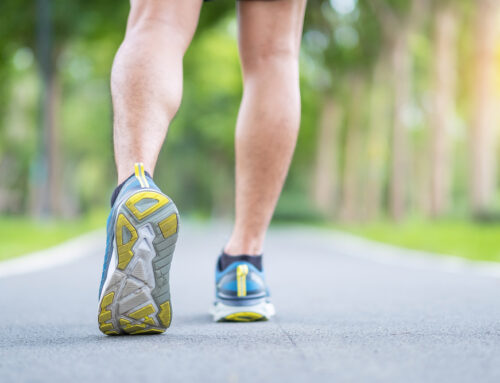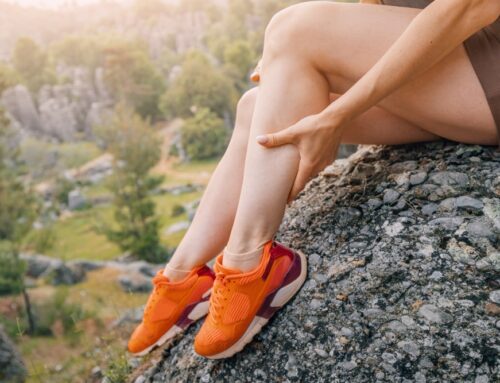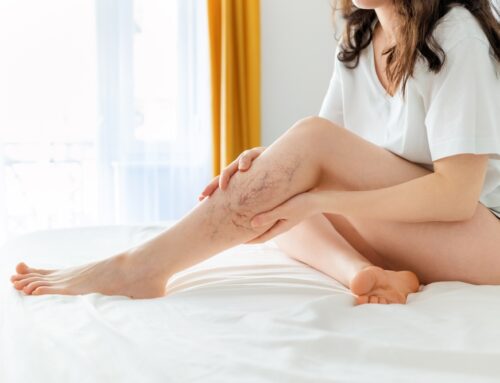It’s summer outside, and the sun is still cooking pretty strong. Unfortunately, this means no jeans or leggings for the foreseeable future yet.
We know that this can be a struggle when it comes to vein conditions. After all, one of the biggest complaints regarding varicose veins is the aesthetic factor. Most women would much rather have smooth, tan legs with no bulging or other unsightly veins.
When it comes to quick fixes for varicose veins, you do have to be careful, however. Today we’ll talk a little bit about the dangers of tanning and whether or not it’s a good way to conceal vein conditions.
Tanning And Veins
Now, let’s move on to the meat and bones of our main question.
Does Tanning Help Varicose Veins?
Sun tanning is not a good solution for varicose veins. Generally speaking, sunlight can cause damage to your skin over time, leading to discoloration and increasing your chances of developing skin cancer.
All this aside, however, the sun is also not great for varicose veins. As a general rule, heat actually irritates varicose veins. This is because heat causes veins to dilate, allowing more blood to pool in those damaged veins. Heat can cause more discomfort for a patient with varicose veins. That is why jacuzzis, tanning, and other prolonged exposure to heat is not recommended if you have vein issues.
Will Tanning Hide Spider Veins?
The short answer is — not very well. UV rays cause collagen in the skin to break down, which can actually worsen the appearance of the skin in that area. Furthermore, there are simply too many risk factors associated with prolonged exposure to UV rays. You’re much better off seeking a cosmetic or medical solution.
Will A Fake Tan Cover Varicose Veins?
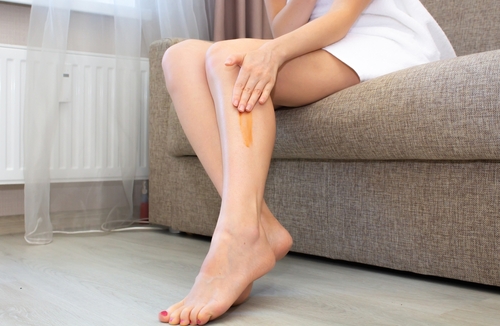
Although real sun tanning may not be a great solution for your specific situation, there are some other easy alternatives.
Sunless Tanning Lotion – If you do a quick search on Amazon or Ulta, you’ll probably come up with a few dozen reputable tanning lotion brands. These can be a great alternative to lying under the sun. The important thing when selecting a tanning lotion is to keep an eye out for any allergens or harmful ingredients.
Makeup And Concealer – Yes, concealer is for more than your face. In fact, some brands even have special body-concealer product lines. Tip: Look for makeup that offers SPF coverage.
Compression Stockings – Ask your doctor about compression socks and/or stockings. Although they probably won’t roll back the time on existing varicose veins, they might prevent further damage. A little compression can be especially helpful during long exercise sessions. They promote good circulation and give your veins some much-needed support.
Things to keep in mind: Although tanning lotions and compression wear are a much better solution than real tanning under the sun, they do come with a caveat. Most tanning lotions are temporary and wear off with time. This means that they have to be re-applied and maintained consistently. The best thing to do is almost always to consult with a vein specialist. They can offer some advice and recommend some treatment options.
Best Fake Tan To Cover Veins On Legs
There isn’t an all-around ‘best’ fake tan. It’s more about what’s best for you and your specific needs. Here are a few general categories for tanning lotions and spray-ons:
Gradual Tanning Lotions
As the name suggests, a gradual tanning lotion takes time to build up and isn’t an instant tanning solution. It’s a great option for newbies that are worried about messing up their first fake tan. It’s much less likely to result in uneven tan lines and streaking.
On the flip side, however, some of the more popular gradual tanning products can get a bit pricey. A small bottle can easily go for $30 or more.
Mousse Tanning
Mousse offers a great texture and volume, allowing for ease of spreading. Many mousse products offer a deep and long-lasting color.
Tanning Mist
Similar to a spray tan, mist is another great way to get a lot of coverage in one go. It also provides a thinner and softer layer of tanning liquid.
Instant Tanning Lotion
Instant tanning lotions are the opposite of a gradual tanning lotion. They’re made to be a wham bam and done deal. If you’ve got an experienced hand when it comes to tanning lotions, this is not a bad way to go.
Tanning Sticks and Towelettes
As newer additions to the fake-tan market, towelettes and sticks are much less well-known. Having said that, they definitely have a purpose. For a fast, messy-less tan on the go, a compact tanning towelette or stick might be just the way to go.
Varicose Vein Symptoms
First off, let’s go over the basics. What are Varicose Veins?
Varicose veins are typically large, bulging veins that occur as a result of a failed valve. When a valve malfunctions and can no longer push blood along, it stagnates and begins pooling. As the blood pools, it stretches the walls of your vein and creates a ‘bulging’ effect.
The symptoms of varicose veins can vary from patient to patient, but here are some common ones:
- Itching
- Pain or discomfort
- Feeling of heaviness
- Bulging, bluish-purple veins
Do keep in mind, however, that some patients experience no discomfort or pain-related symptoms in relation to their varicose veins.
Spider Vein Symptoms
Spider veins are often confused with varicose veins, but they’re actually different. Unlike varicose veins, spider veins are much smaller and thinner in appearance. They usually appear in a web-like pattern just under the surface of the skin.
Fortunately, spider veins are typically painless and are more of an aesthetic concern.
Varicose Vein Removal
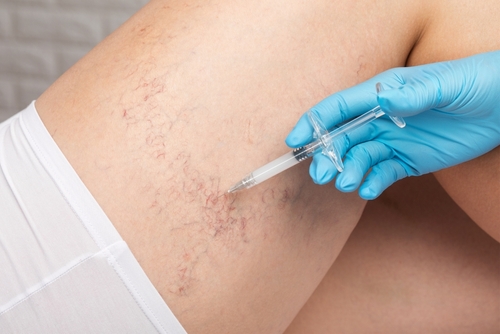
By far the best way to resolve varicose and spider veins is through medical intervention. It’s more effective and long-lasting. Keep in mind that any tanning lotion is a temporary solution, whereas the results of sclerotherapy or venous ablation can last for years.
Sclerotherapy
One of the most straightforward procedures, sclerotherapy, is a simple in-office treatment that can be performed in under an hour. During a session of sclerotherapy, your doctor injects a solution into the damaged veins. As the solution irritates the vein walls, they stick together and seal up. The advantage of this technique is that it’s minimally invasive and requires no recovery time.
Can I Tan After Sclerotherapy?
You should avoid tanning either in the sun or in a tanning bed for at least 1 month after receiving sclerotherapy treatments before tanning. If you do tan after receiving sclerotherapy, it can cause hyperpigmentation around the treatment area.
Microphlebectomy
During a microphlebectomy, a doctor essentially pulls out the damaged veins, allowing the blood to simply reroute to a healthier vein. Although minimally invasive as well, it’s best to avoid strenuous activity for a few weeks following a microphlebectomy.
Venous Ablation
Similar to sclerotherapy, venous ablation also works by irritating the walls of your veins. Unlike sclerotherapy, however, it uses radiofrequency (RF) energy. Following the procedure, your blood simply reroutes to a healthier vein and the old damaged vein is reabsorbed back into your body. Both are very effective, minimally invasive options to treat varicose veins.
Spider Veins Treatment
Sclerotherapy is not only a great treatment for varicose veins but also spider veins. The procedure is carried out in pretty much the same way. The fact that the solution is injected with a small needle makes it all the more effective for those smaller veins.
Since spider veins are often painless, however, you may not need to treat them at all. Talk to your vein specialist and make a decision together. Remember to ask lots of questions and gather as much information as possible before making your decision.
Vein Specialist of Flint, Michigan
If you’re looking for a way to hide your varicose or spider veins, don’t give up. Here at VeinSolutions™, we’ve got a variety of treatment options that can help you out. We offer sclerotherapy, microphlebectomy, venous ablation, and more.
Best of all, we offer FREE vein screenings. This means that you’ll have all of the information you need to make the best decision possible for your vein health.
If you’re interested in learning more about your treatment options, don’t forget to check out the rest of our website. We’ve got a variety of great articles and guides, as well as videos with our very own doctors.
Request A Consultation
Give Us A Call:
(810) 232-3363
Give Us A Call:
(810) 232-3363
